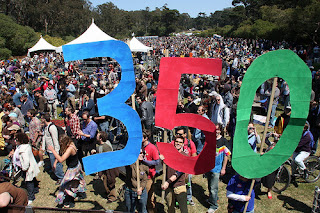Moratory on Renewable Investments?
In general, in the quest for lowering our CO2 emissions, efficiency/insulation is the lowest of low hanging fruits. It gives us more bang for the buck than renewable energy. Let me elaborate.
Let's make here a simple exercise comparing, say, installing solar panels in your house vs. replacing your lamps by more efficient ones. Sure, this is something that is well on its way in many countries but it is an example of what can be done also with air conditioners (replacing them with units of higher SEER ratings), by the installation of insulation, and literally with hundreds of other efficiency projects.
Again, we'll elaborate on the lamps vs. solar one since it is very easy to present.
Let's say a 100 Watt incandescent light bulb costs $1 US dollar.
Let's say the equivalent to replace the above (23W) CFL bulb costs $3.00. (Your prices may vary, but these are the cost ball park figures I've just checked right now at Amazon.com).
Let's say your cost per kWh is $0.12 (again, your cost may be different and possibly higher).
We'll consider that you use the bulb 4 hours per day.
The question is: how much do you have to invest in CFLs to save one kWh of electricity?
The 100 W bulb consumes in a full year:
100W x 4 hours x 365 days = 146,000 Wh. Divide this by 1,000 and we get 146 kWh.
Following the same steps, the CFL consumes 33.58 kWh.
Thus the costs of electricity to operate each bulb are:
Incandescent: 146 x 0.12 = $17.52
CFL: $4.03
So, by investing $3, you are saving $13.49 for four years (considering the CFL lasts ~6,000 hours).*
Thus, by investing $3, in total you are saving $54 dollars.
So your ROI is ($54-$3)/$3 = 1,800%.
Wow!
Now, let's calculate how much solar installed capacity we would need to power that 100 W bulb.
146 kWh /24 hrs / 365 days * 1000 = 16.67 W (average).
To produce this number of W (average) in a place with, say, 18% annual solar capacity factor (CF) you would need this installed capacity:
16.67 W / 0.18 CF = 92.61 Wp
Let's say your residential system will cost $3.50 per installed watt (including inverters, installation, etc.).
The total investment would be: $324.**
Let's say they last 25 years, so in total you would save: $17.52 x 25 years = $438.
So your ROI is: ($438 - $324) / $324 = 35%
The ROI of efficiency is FIFTY times greater.
Additionally, let's remember that the carbon emissions of the kWh not produced are zero, while the emissions of solar PV is ~46 grams per kWh, so, even in a purely environmental sense, the first option is more effective.
If there ever was a no-brainer, this is it.
Thus, my humble recommendation is to establish a global moratorium on all new renewable energy installations and to channel all those hundreds of billions of dollars spent annually toward efficiency / insulation.
Sure, somebody might ask: why don't we do both? However, since the ROI (and CO2 emissions reductions) is so much higher in the first option, renewables would make sense only when we run out of efficiency projects and we are still very far from that situation.
Feel free to add to the conversation in Twitter: @luisbaram
*Another plus is that the CFL lasts longer than the incandescent bulb, but for simplification we'll just ignore this.
** Part of the cost might be covered with subsidies, but society would still be paying for it.




Comments